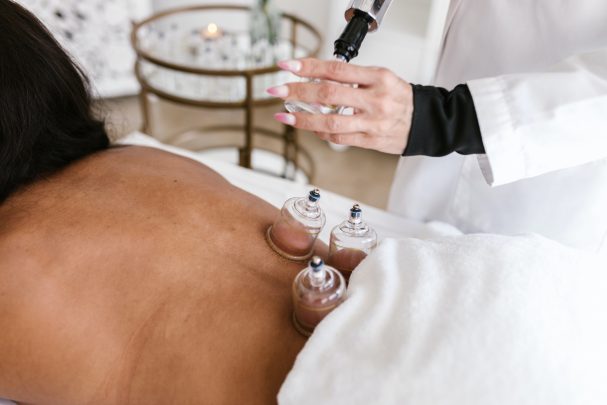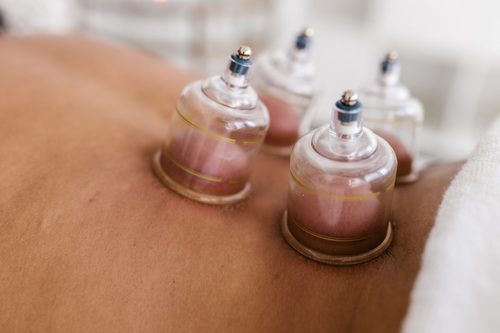Alternative therapies are on the rise as people seek more holistic approaches to health and wellness. When you think about cupping, the only image that might come to mind are unsightly circular bruises. As daunting as the thought of it may be, cupping therapy has garnered a lot of attention recently…
Amongst other benefits, cupping therapy is an effective way to soothe muscular pain and discomfort. Let’s get into it.
Understanding cupping therapy
Cupping is an ancient therapeutic technique that involves placing cups on the skin to create a vacuum effect. The suction effect causes the skin and superficial muscle layers to be drawn into the cups, stimulating blood flow, relaxing muscles, and encouraging the release of toxins. Cupping therapy is believed to treat a wide range of conditions, from pain and inflammation to respiratory disorders and digestion.
View this post on Instagram
The healing powers of cupping therapy
Pain relief
One of the primary benefits of cupping therapy is its potential to relieve pain. When blood circulation is improved, tension in the muscles can be released. This will reduce pain caused by conditions like back pain, neck pain, and migraines.
Improved circulation
Cupping therapy enhances blood circulation, which can aid in the delivery of oxygen and nutrients to cells, tissues, and organs. This increased circulation promotes healing and overall well-being.
Muscle relaxation
The suction created by cupping helps relax tense muscles by pulling out accumulated lactic acid. This can be particularly beneficial for athletes and individuals with muscular tension.
Detoxification
Cupping is believed to facilitate the removal of toxins and waste products from the body. The suction draws these substances to the surface, where they can be more easily eliminated by means of lymphatic drainage.
Immune system boost
The improved circulation and stimulation of lymphatic flow through cupping therapy may contribute to a strengthened immune system response.
Stress reduction
The gentle pulling and soothing sensation of cupping can have a relaxing effect on the nervous system, helping to reduce stress and anxiety.

Pexels
Wet vs. dry cupping
There are two main types of cupping: wet cupping (also known as Hijama) and dry cupping. While both methods share the same fundamental principles, they differ in their application and purpose.
Dry cupping
Dry cupping involves creating a vacuum by placing cups on the skin. Once the cups are placed, the air inside is partially removed to create suction. The cups are typically left in place for a few minutes, and they may either be stationary or moved across the skin in a gliding motion. Dry cupping is primarily used for pain relief, muscle relaxation, and improved blood circulation.
ALSO SEE: X-rays and scans: what are the differences?
The suction pulls the skin and breaks capillaries, or blood vessels under the skin, creating the bruise-like effect. The body then responds to this as an injury, sending increased blood flow there to promote healing.
Wet cupping (Hijama)
Wet cupping takes the therapy a step further by incorporating a controlled process of bloodletting. After the cups are removed, small incisions are made on the skin, and the cups are re-applied to draw out a small amount of blood. This method is believed to help remove stagnant blood and promote detoxification. Wet cupping is often used for more specific conditions, including certain chronic illnesses and detoxification purposes.
View this post on Instagram
ALSO SEE:
Feature Image: Pexels

